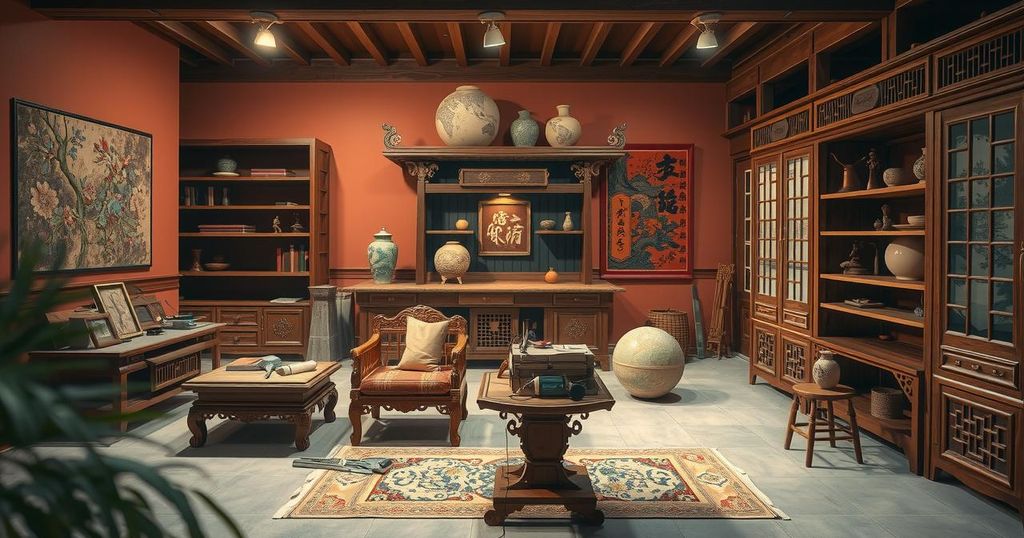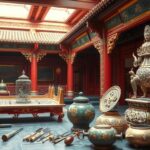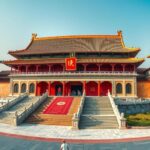Integrating Science with Tradition: Restoring Artifacts in China’s Forbidden City
The Forbidden City in Beijing employs a combination of modern technology and traditional techniques for the restoration of its extensive collection of over 1.8 million artifacts. Approximately 150 workers are dedicated to preserving various historical items, including porcelain and antique clocks, while inspections utilize advanced X-ray equipment. Restoration methods have evolved to ensure cultural values are maintained, reflecting the commitment of the Palace Museum to safeguard China’s heritage.
In Beijing’s Forbidden City, a synthesis of science and tradition is employed to restore invaluable relics. Workers utilize advanced technology including X-ray diffraction machines to analyze artifacts, such as a fragment of a glazed roof tile, aimed at understanding the nature of blemishes on their surfaces. This methodological approach facilitates preservation efforts for the numerous historical items housed in the former imperial palace, which plays host to thousands of tourists.
Approximately 150 skilled restorers blend scientific methodologies with time-honored techniques to care for the over 1.8 million relics within the museum’s collection, which includes scroll paintings, calligraphy pieces, bronzes, ceramics, and antique clocks gifted by early European visitors. Among these, restorers diligently work on a patterned green silk panel featuring the character for “longevity,” believed to have been a gift for Empress Dowager Cixi during her reign.
Though the restoration process is often laborious and repetitive, requiring months of meticulous work, the restorers find satisfaction in their achievements. One such restorer, Wang Nan, expressed, “I simply enjoy the sense of achievement when an antique piece is fixed.” The Forbidden City, once inaccessible to outsiders, is now a major historic site known formally as the Palace Museum.
The Palace Museum witnessed significant losses during World War II when many artifacts were hidden to prevent seizure by the Japanese forces. Following the civil war in 1949, several prized pieces were relocated to Taiwan, housed in the National Palace Museum. Nevertheless, the Beijing institution has adapted over time, further enhancing its collection through evolving restoration methodologies that still root back to traditional practices.
According to Qu Feng, the head of the Conservation Department, the aim of their restoration efforts remains: to “protect the cultural values [that artifacts] carry,” emphasizing the importance of both the scientific and cultural aspects of their work in preserving China’s rich heritage.
In conclusion, the restoration efforts at Beijing’s Forbidden City exemplify the integration of science and traditional methods to preserve a vast historical collection. With a dedicated team of restorers applying innovative techniques alongside time-honored practices, the Palace Museum continues to protect and rejuvenate its invaluable artifacts, aiming to uphold the cultural values they embody. This delicate blend ensures that the rich history of the Forbidden City is not only maintained but also appreciated by future generations.
Original Source: www.timesleaderonline.com








Post Comment